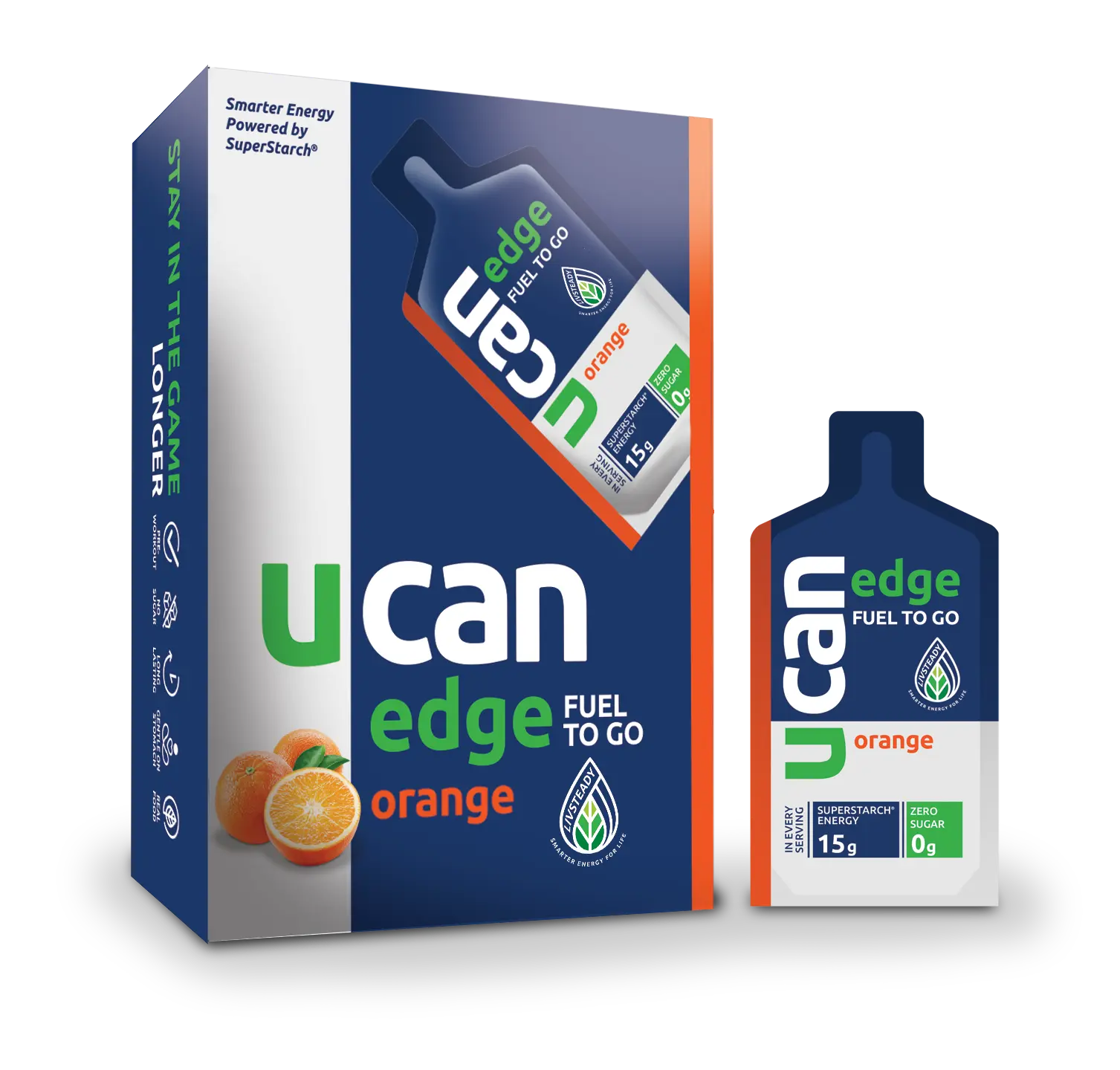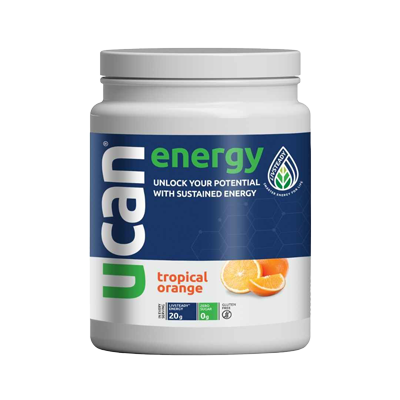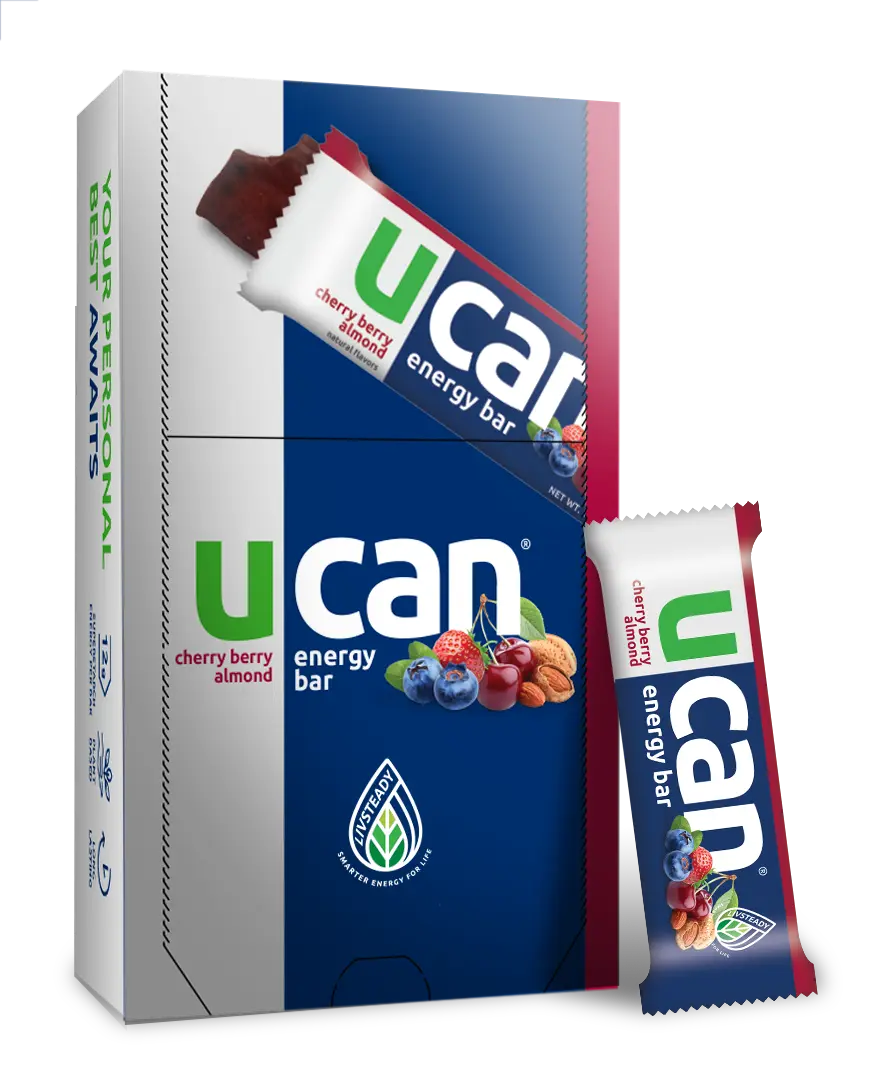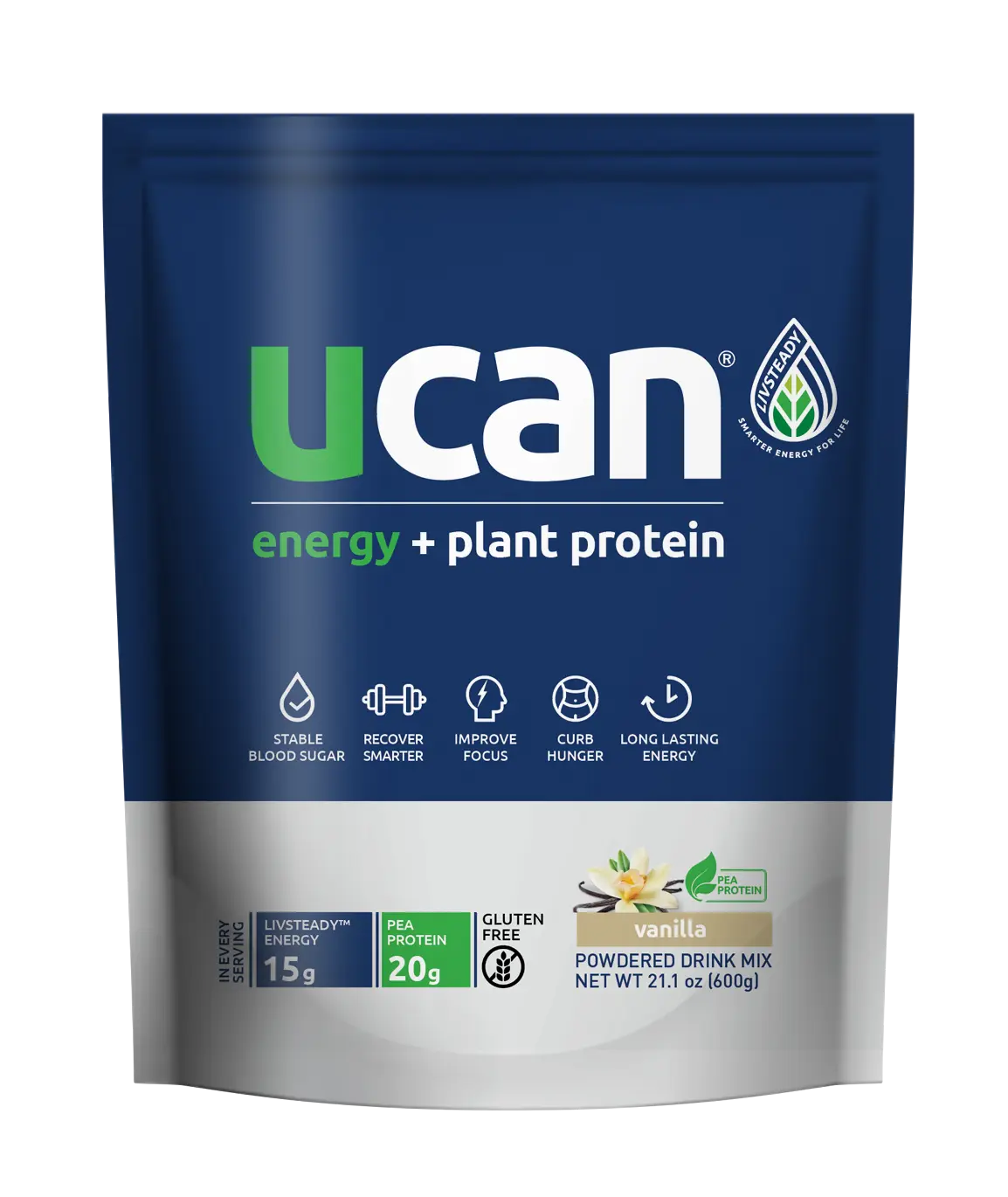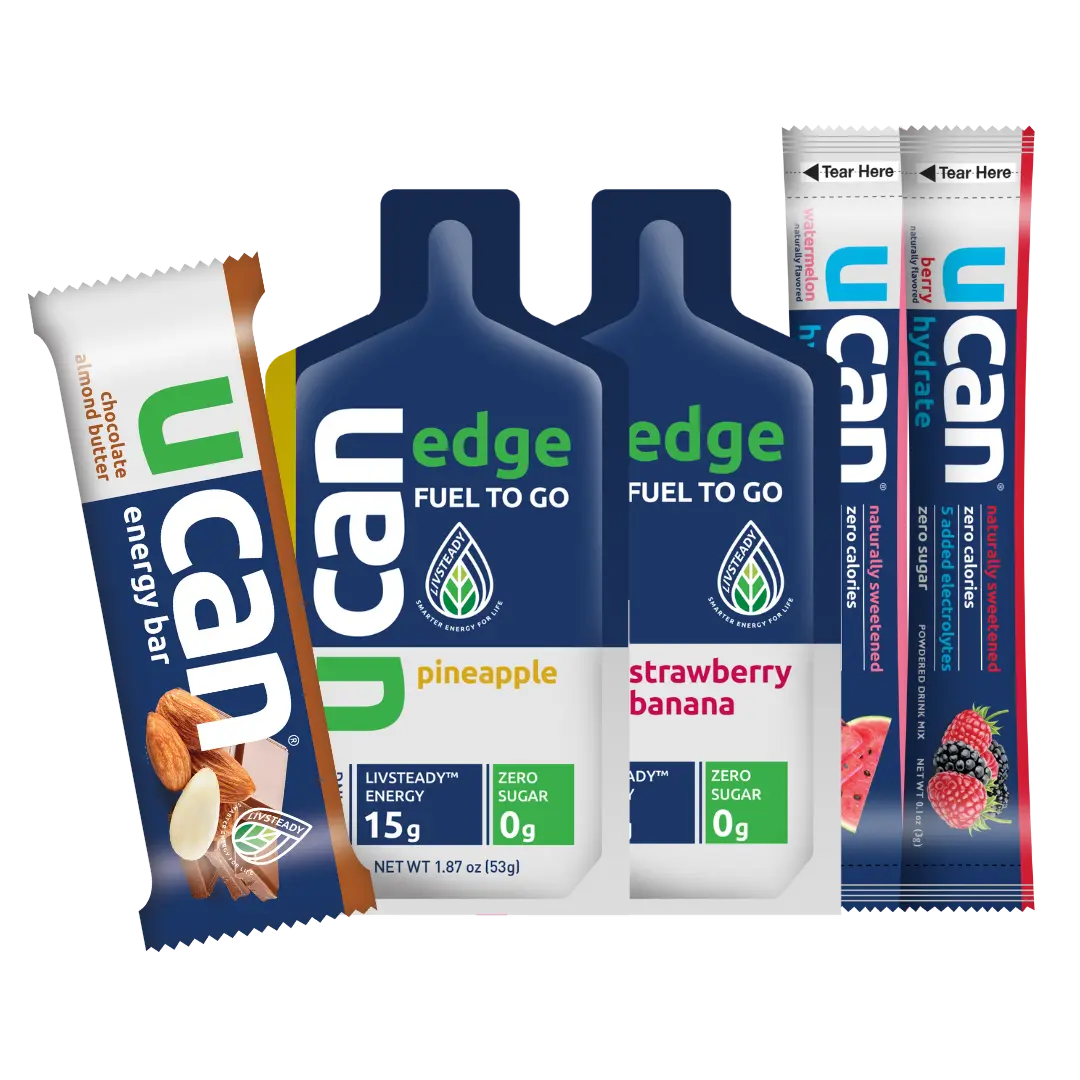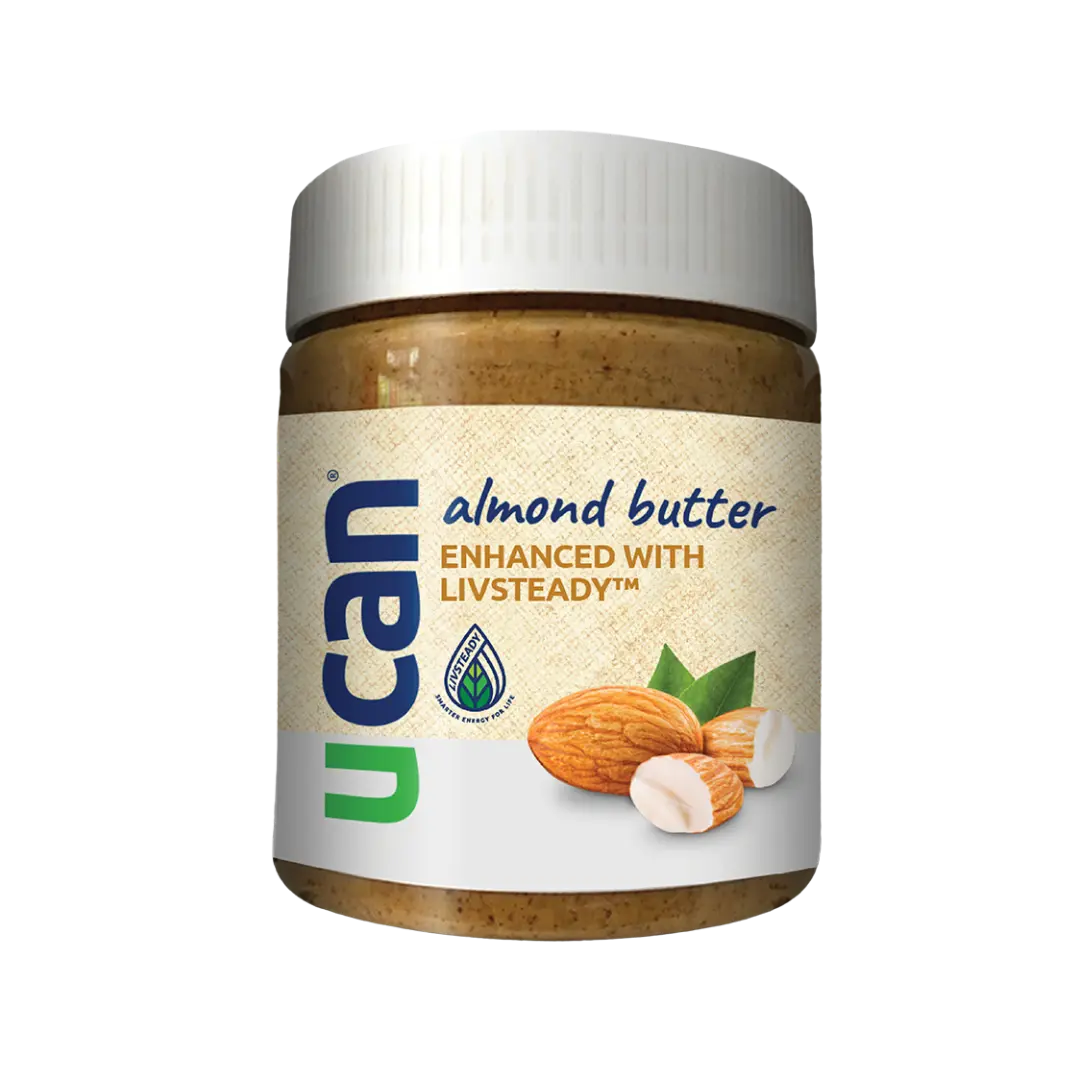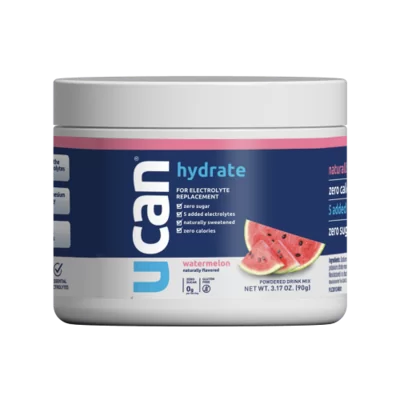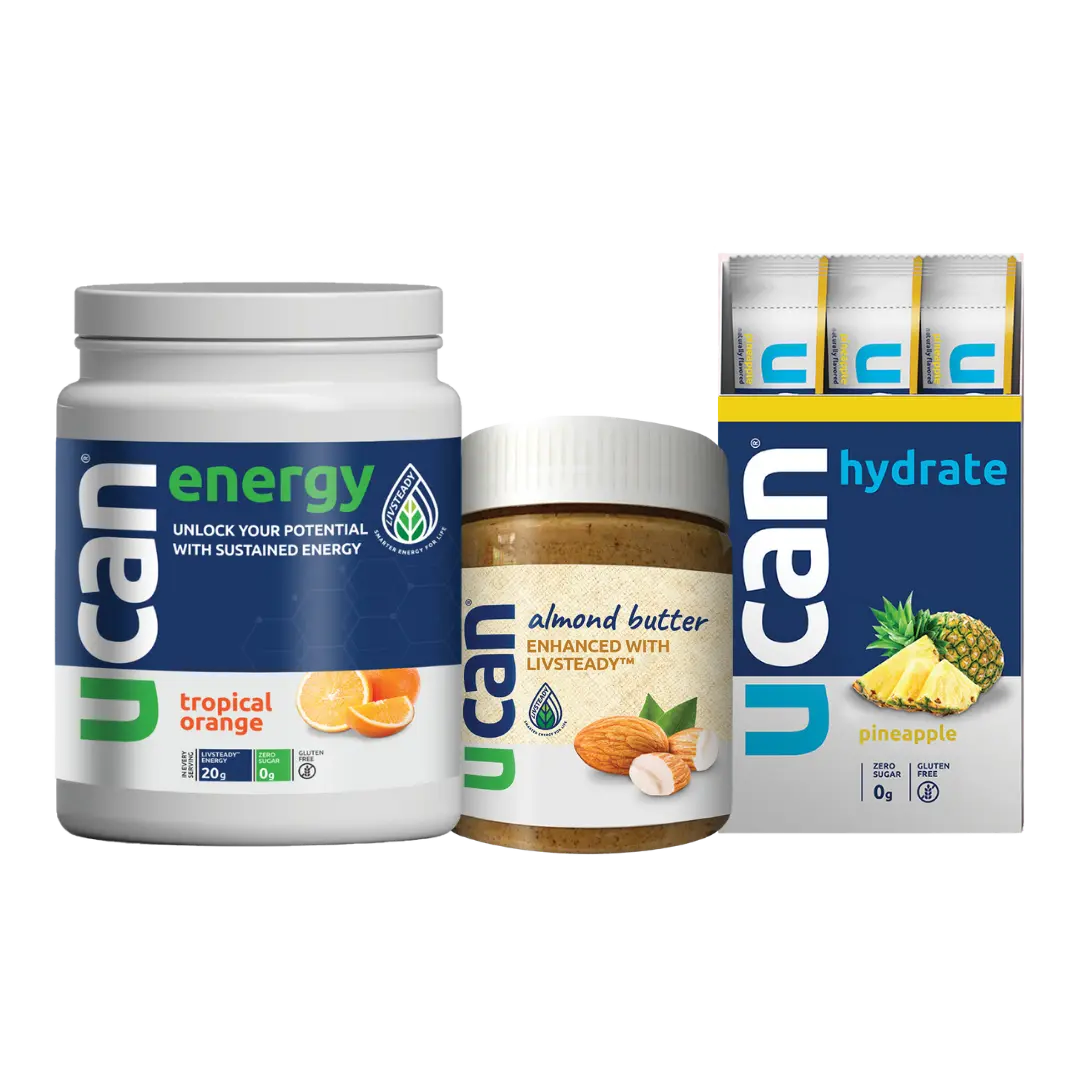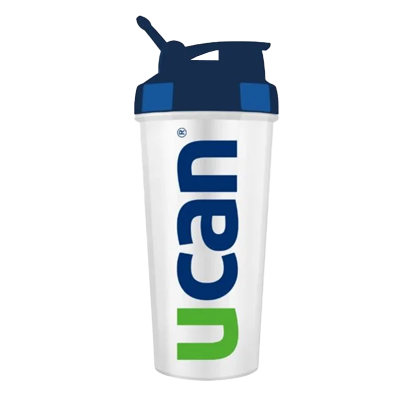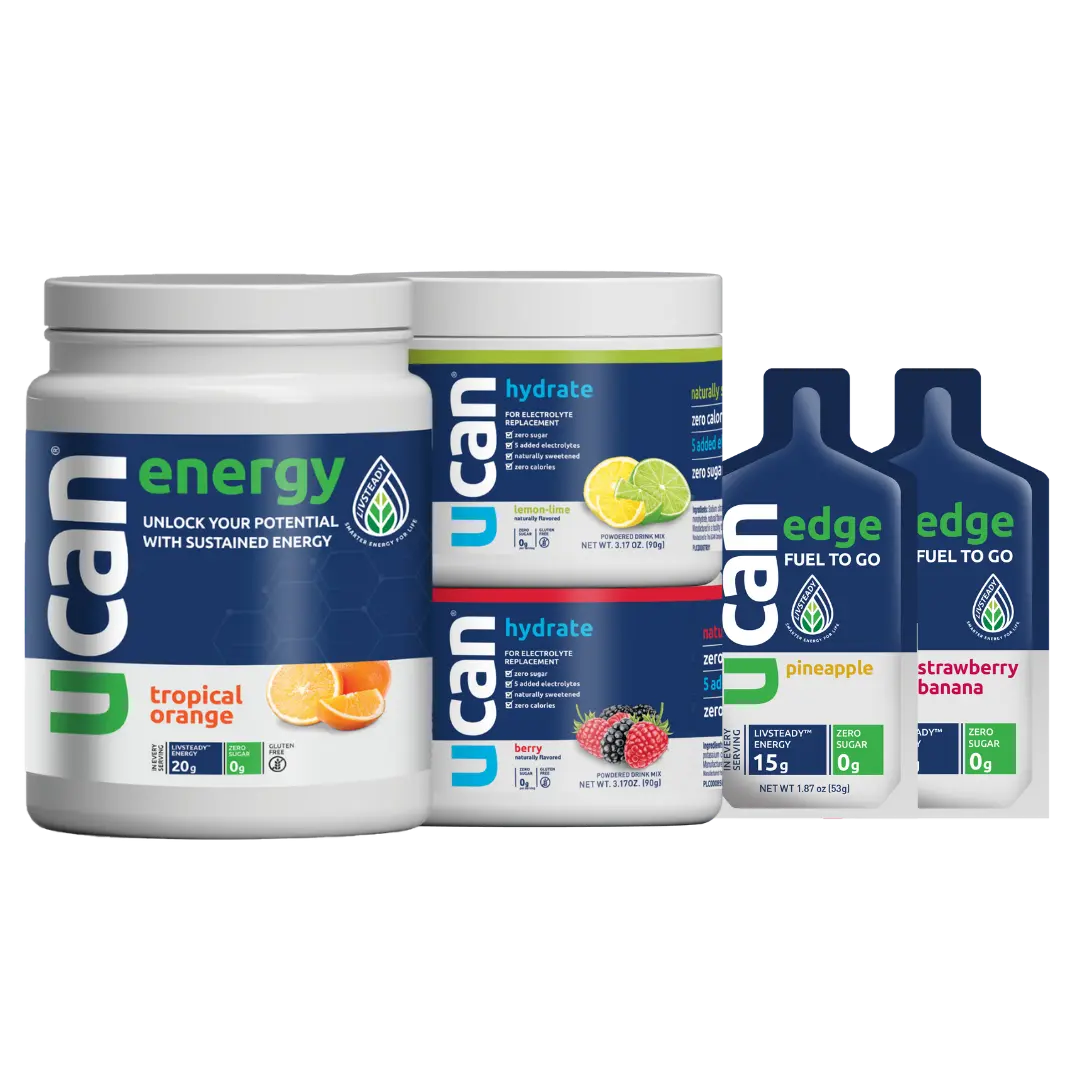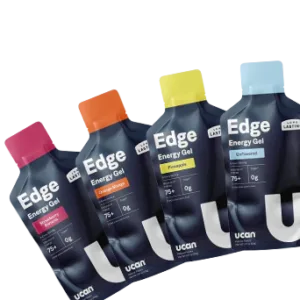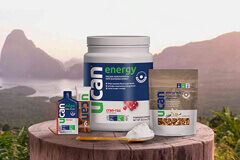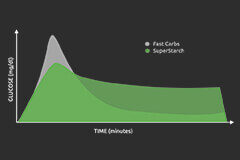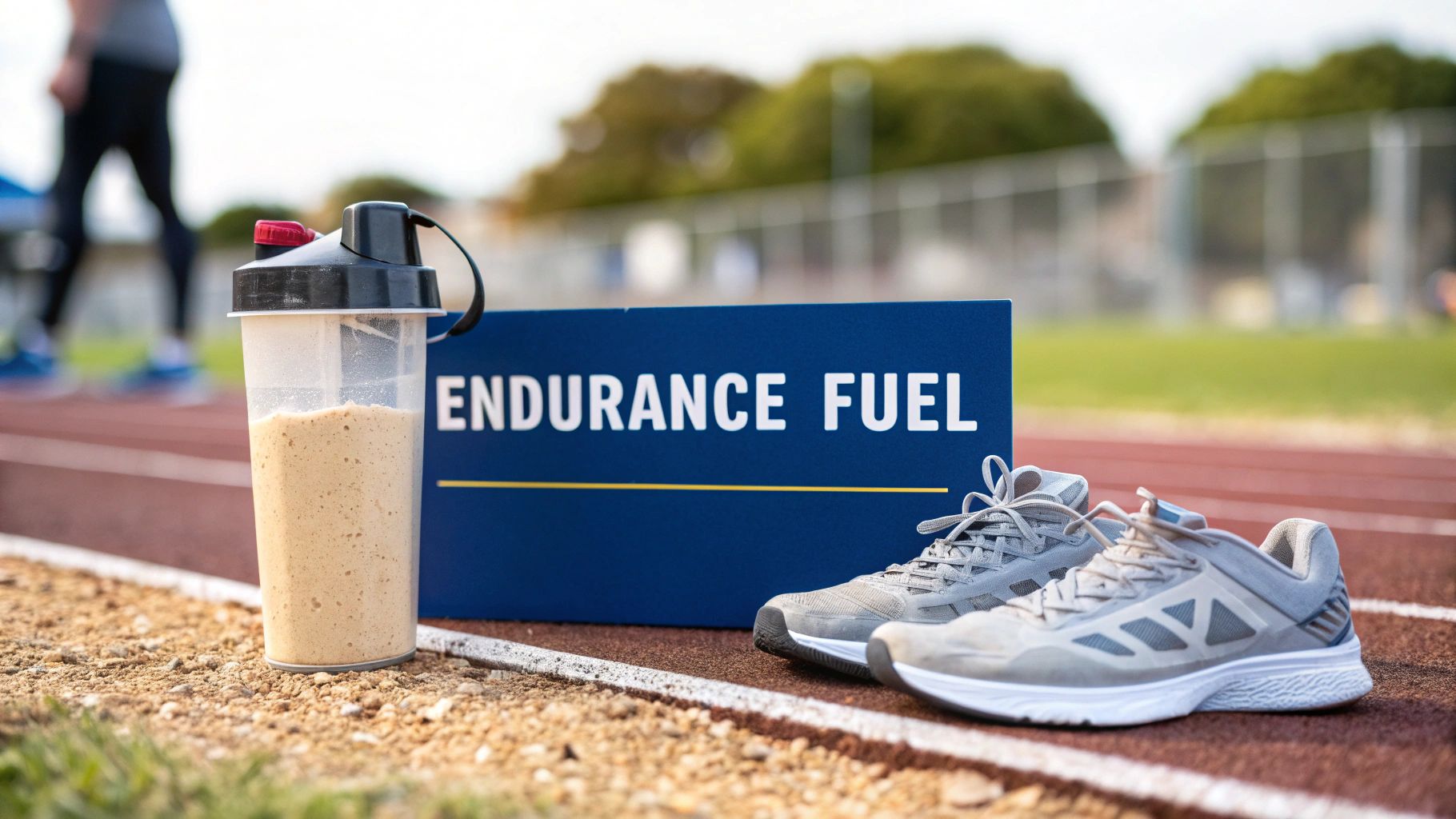High protein shake for endurance athletes — use protein to build durability, not mass
When you hear high protein shake, a bodybuilder might spring to mind. For serious Aussie/NZ endurance athletes—whether you’re chasing a PB at the Melbourne Marathon, lining up at the Gold Coast Marathon, or prepping for Ironman Cairns—a high protein shake is never about getting bulky. It’s a precise recovery tool: 25–30 g of high-quality protein (high in leucine) that triggers muscle repair, reduces soreness and lets you stack high-quality sessions with less downtime.
Author: Generation Ucan · Last updated: 28 September 2025
What “High Protein” Actually Means for Endurance Athletes
If you’re a marathoner grinding out tempo runs (e.g., 8 × 1 km @ 4:05–4:10/km with 90 s jog recovery) or a triathlete finishing a 3-hour long ride plus 20–30 min brick run, “high protein” doesn’t mean giant, bodybuilder-style scoops. It means a targeted dose to kickstart Muscle Protein Synthesis (MPS) and repair the micro-damage caused by repeated loading.
What to do: After key sessions (long runs, threshold repeats, race-pace bricks), consume a high protein shake delivering 25–30 g of fast-absorbing protein with roughly a 3:1–4:1 carb-to-protein ratio when glycogen restoration matters.
Why it works: That 25–30 g window provides the essential amino acids — most importantly leucine — that act as the molecular “on-switch” for MPS and the rebuilding process that increases durability rather than bulk. Extra protein beyond that moment produces diminishing returns for synthesis and often gets oxidised for fuel.
How to apply (Aussie race context): After a 32–36 km long run on a Melbourne training week, or after a 4–5 hour ride at steady power before a race simulation, take your shake within ~60 minutes and follow with a real meal within 2–3 hours. For convenience and consistency, a product like UCAN Energy + Protein simplifies this step by pairing targeted whey protein with slow-release UCAN carbohydrate to stabilise energy as you recover. 👉 Shop UCAN Energy + Protein

Defining an Effective Dose
Forget “more is better.” The evidence-based sweet spot for most athletes to stimulate a maximal MPS response is 25–30 g of high-quality protein per serving, containing ~2.5–3 g of leucine.[1]
What to do: Use a measured scoop or a ready-to-drink serving that supplies 25–30 g protein and check the leucine content on the label where possible.
Why it works: Muscle protein synthesis is saturable — once leucine and essential amino acids are present in adequate concentration, additional amino acids do not further increase the acute MPS response and are likely oxidised for energy.
How to apply: For double-session days (e.g., swim interval AM + long ride PM), take one shake after each key session or have one post-PM sessions and a small high-protein snack after the AM session to maintain amino acid availability.
Key Takeaway: Use a high protein shake as a targeted recovery tool (25–30 g, high-leucine), not as a means to bulk up. It shortens recovery time and lets you train more often at higher quality.
Note: ready-to-drink and powdered formulas are staples for athletes who need consistency between sessions, travel for races, or run early-morning sessions before work.
The Science of Endurance Recovery and Muscle Repair
Every hard session—intervals, long runs, threshold efforts—creates micro-tears in muscle fibres. That micro-damage is the stimulus for adaptation. How quickly and efficiently you repair those fibres determines how fast you can recover and the quality of your next session.

What to do: Treat MPS like a coaching session: create the stimulus (quality training), then provide a targeted recovery feed (25–30 g protein; leucine-rich) as soon as practical. Repeatability wins.
Why it works (mechanics): Leucine activates mTOR signalling which increases the rate of MPS and net protein balance. A shake that delivers the leucine trigger within the post-session window accelerates repair and reduces the cumulative breakdown that eats into subsequent session intensity.[2]
How to apply: In a week with two quality sessions back-to-back (e.g., a tough Tuesday track + a long Saturday run), ensure targeted protein intake after each session and add a pre-sleep slow protein on heavy weeks to sustain amino acids overnight.
From Micro-Tears to Performance Gains
When MPS is consistently prioritised, muscles not only recover to baseline — they adapt to handle more volume or intensity. For endurance athletes that means faster turnover between sessions, less technique breakdown late in races, and improved resilience across a training block.
- Faster recovery between sessions: Optimised MPS shortens the recovery curve so you can schedule more high-value sessions within a mesocycle.
- Reduced DOMS & retained technique: Less soreness means better form in follow-up sessions—vital for marathon pacing and triathlon transitions.
Why It Matters: Triggering a reliable MPS response with a high protein shake is the difference between surviving a training block and actually improving fitness for races such as the Sydney Marathon or Ironman Cairns.
The Role of Amino Acids
A complete protein contains all nine essential amino acids; whey proteins are naturally complete and especially rich in BCAAs (branched-chain amino acids) with a high leucine share. That’s why whey is often the “go-to” for immediate post-session recovery.
What to do: Prioritise complete proteins (whey isolate/concentrate) in the first 60 minutes after a key workout. If dairy-free, use a blended plant formula that provides a complementary amino acid profile and an equivalent leucine dose.
How to apply: After a hill session (6 × 3 min uphill @ strong effort with easy jog back), have a shake with at least 2.5–3 g leucine. If you race or train in humid Aussie summers, keep hydration and electrolytes in the same recovery plan—add an electrolyte tablet if needed.
How to Choose the Right High Protein Shake
Supplement aisles are noisy. For endurance athletes, your decision should be driven by three performance-focused checks: digestion speed, amino-acid profile (leucine), and how the formula fits into your session/race nutrition plan.
What to do: Read the nutrition panel. Pick a product that clearly states protein per serve, leucine content (or BCAA content to estimate leucine), and carbohydrate type/amount if it is aimed at post-session glycogen restoration.
Why it works: Fast-absorbing proteins deliver amino acids quickly to muscles; slower proteins (casein) are better for overnight muscle feeding. The addition of carbs post-session increases insulin and helps shuttle amino acids into muscles while also beginning glycogen repletion.
How to apply: Use whey isolate for immediate post-session recovery. Use casein or a mixed meal before bed on heavy training weeks. For quick refuelling after intervals then a bike-to-run brick in race week, a combined carb+protein shake reduces gastric load and keeps you race-ready. UCAN Energy + Protein is formulated for that combined role. View product details
Decoding the Protein Types
- Whey Protein Isolate (WPI): Rapid absorption, high protein-per-serve, low lactose — ideal immediately after sessions that require fast amino acid delivery.
- Whey Protein Concentrate (WPC): Slightly slower, contains more non-protein calories — a budget-friendly post-session option if tolerated well.
- Casein: Slow-release; best as a pre-sleep feed during heavy training blocks to support overnight repair.[3]

Reading the Label Like a Pro
- Leucine content: Aim for ~2.5–3 g leucine per serve or check BCAA content and calculate leucine proportion where listed.
- Carb-to-protein ratio: For endurance sessions where glycogen was depleted, target ~3:1–4:1 carbs to protein (g:g) for the recovery drink to speed glycogen repletion and assist amino-acid uptake.
- Fillers & sweeteners: Short ingredient lists are better. Avoid excessive gums and artificial colours that may disrupt gut comfort around intense training.
The Endurance Athlete’s Formula: Fast, high-leucine protein + targeted carbohydrates = reliable recovery. This is the design principle behind UCAN Energy + Protein, which uses high-quality whey and LIVSTEADY™ slow-release starch to simultaneously refuel and rebuild.
Internal reads: For more on race-day fuelling and energy gels, see our guides on UCAN Energy Gels and electrolytes.
A Guide to Plant-Based Protein Shakes
Vegan or dairy-sensitive athletes can absolutely achieve the same recovery outcomes—but you must pay attention to amino-acid completeness and leucine dose.

Complete vs. Incomplete Proteins: The Plant-Based Puzzle
Many single-source plant proteins lack one or more essential amino acids—commonly lysine or methionine. Smart blends (e.g., pea + rice, pea + faba) create a complete profile.
What to do: Choose blended plant proteins that list complementary sources and that provide the leucine target per serve. If leucine isn’t listed, check BCAA and total EAA (essential amino acid) figures.
Why it works: Blended plant formulas replicate the EAA profile of animal proteins and when dosed correctly, will trigger an equivalent MPS response.
How to apply: Use plant protein blends immediately post-session in the same way as whey. On heavy volume weeks, a blended formula with added digestive enzymes can reduce GI discomfort during back-to-back session days. UCAN’s Vanilla Energy + Plant Protein is a formulated option that pairs plant protein with LIVSTEADY™ carbohydrate for athletes needing dairy-free recovery. View plant product
What to Look for in a Top-Tier Plant Protein Shake
- Smart protein blend: at least two complementary plant sources (pea + rice, pea + faba).
- Leucine trigger: ~2.5–3 g leucine per serve.
- Easy on the gut: third-party tested or enzyme-supported formulas for race weeks.
- Clean ingredient list: minimal fillers or artificial sweeteners.
Mastering Protein Timing and Dosing for Peak Performance
Timing is practical, not mystical. The “30-minute anabolic window” is flexible — aim to start recovery feeding as soon as practical after a major session, ideally within 60 minutes. The priority is consistency across the training week.
The Post-Session Protocol
What to do: After high-intensity or long sessions, take 25–30 g of fast protein with 0.75–1.0 g/kg carbs for effective glycogen resynthesis when needed. For a 70 kg athlete that’s ~50–70 g carbs alongside your protein for a full glycogen-focused recovery.
Why it works: Protein supplies the EAAs to start MPS; carbs raise insulin to support glycogen repletion and improve amino-acid uptake.
How to apply: Post-threshold sessions or long rides: a single combined shake (e.g., UCAN Energy + Protein) is quick, low-volume on the gut and lets you get back to routine—especially useful on race-travel days or when balancing work and training.
Practical Application: After hill repeats or a race rehearsal, a combined carb + protein shake speeds recovery and reduces gastric load compared with a large meal you might not tolerate right away.
Advanced Dosing Strategies for Heavy Training Blocks
- Protein pulsing: 25–30 g every 3–4 hours across the day to create repeated MPS responses during intense weeks.
- Pre-sleep protein: 30–40 g casein or a slow-release protein 30–60 min before bed on heavy weeks to sustain overnight repair.
Tools: Use a food-tracking app or training log to map protein distribution across high-volume weeks—this helps with periodisation and race taper planning.
Frequently Asked Questions
How Much Protein Is Too Much in One Go?
Most endurance athletes effectively stimulate MPS with ~25–40 g per eating occasion. More than that in a single sitting doesn’t increase synthesis and will either be used for energy or stored. Spread total daily protein across multiple doses for best adaptation.
Can I Use a Protein Shake as a Meal Replacement?
A shake can be a strategic short-term meal substitute (between early-morning sessions and work), but whole-food meals are essential for micronutrients and fibre. Use shakes to solve timing problems—UCAN Energy + Protein is a practical option when a full meal isn’t possible.
Do I Need a High-Protein Shake on Rest Days?
Yes—consistency matters. Maintain daily protein targets across meals on rest days, and consider a smaller shake if you struggle to meet totals from food alone. Rest-day recovery allows adaptation to occur; don’t underfuel it.
Will Protein Shakes Make Me Bulky?
No. Bulk requires chronic calorie surplus combined with hypertrophy-focused resistance training. For endurance athletes, high-protein shakes support lean repair and power-to-weight ratio, not mass gain.
Ready to make recovery simple and consistent? For post-session recovery that pairs targeted protein with UCAN’s slow-release carbohydrate, check out UCAN Energy + Protein. If you need a dairy-free option, see UCAN Vanilla Energy + Plant Protein.
References
[1] Jäger R, et al. International Society of Sports Nutrition Position Stand: protein and exercise. Journal of the International Society of Sports Nutrition. 2017.
[2] Børsheim E, et al. Essential amino acids and muscle protein recovery from resistance exercise. American Journal of Physiology – Endocrinology and Metabolism. 2002.
[3] Boirie Y, et al. Slow and fast dietary proteins differently modulate postprandial protein accretion. Proceedings of the National Academy of Sciences USA. 1997.
[4] Tipton KD & Wolfe RR. Exercise, protein metabolism, and muscle growth. International Journal of Sport Nutrition & Exercise Metabolism. 2001.
[5] Moore DR, et al. Protein ingestion to stimulate myofibrillar protein synthesis following resistance exercise. Journal of Applied Physiology. 2009.

